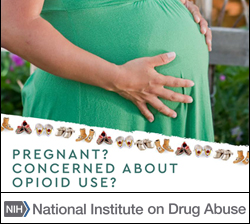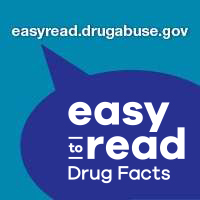Brief Description
Opioids are a class of drugs that include the illegal drug heroin, synthetic opioids such as fentanyl, and pain relievers available legally by prescription, such as oxycodone (OxyContin®), hydrocodone (Vicodin®), codeine, morphine, and many others.
- Summary
- NIDA's Role in the NIH HEAL Initiative
- Prescription Opioids
- Heroin
- Fentanyl
- Opioid Research Findings Funded by NIDA
Swipe left or right to scroll.
| Drug | Time Period | 8th Graders | 10th Graders | 12th Graders |
|---|---|---|---|---|
| Heroin | Past Year | 0.30 | 0.20 | 0.40 |
| Narcotics other than Heroin | Past Year | - | - | 4.20 |
| OxyContin | Past Year | 0.80 | 2.20 | 2.70 |
| Vicodin | Past Year | 0.70 | 1.50 | [2.00] |
Swipe left or right to scroll.
| Drug | Time Period | Ages 12 or Older | Ages 12 to 17 | Ages 18 to 25 | Ages 26 or Older |
|---|---|---|---|---|---|
| Heroin | Past Year | 0.30 | 0.10 | 0.60 | 0.30 |
| Pain Relievers | Past Year | 4.10 | 3.10 | 7.20 | 3.70 |
Summary of the Issue
All opioids are chemically related and interact with opioid receptors on nerve cells in the body and brain. Opioid pain relievers are generally safe when taken for a short time and as prescribed by a doctor, but because they produce euphoria in addition to pain relief, they can be misused (taken in a different way or in a larger quantity than prescribed, or taken without a doctor’s prescription). Regular use—even as prescribed by a doctor—can lead to dependence and, when misused, opioid pain relievers can lead to addiction, overdose incidents, and deaths.
An opioid overdose can be reversed with the drug naloxone when given right away. Improvements have been seen in some regions of the country in the form of decreasing availability of prescription opioid pain relievers and decreasing misuse among the Nation’s teens. However, since 2007, overdose deaths related to heroin have been increasing. Fortunately, effective medications exist to treat opioid use disorders including methadone, buprenorphine, and naltrexone.
A NIDA study found that once treatment is initiated, both a buprenorphine/naloxone combination and an extended release naltrexone formulation are similarly effective in treating opioid addiction. However, naltrexone requires full detoxification, so initiating treatment among active users was more difficult. These medications help many people recover from opioid addiction.
NIDA Resources
Related Resources
- The Opioid Misuse Community Assessment Tool (NORC)
- Opioid Misuse in Rural America (USDA)
- Opioid Misuse Resource Map (USDA)
- Infographic - How Can USDA Help Address the Opioid Epidemic (USDA)
- FDA grants marketing authorization of the first device for use in helping to reduce the symptoms of opioid withdrawal (FDA, November 2017)
- The Federal Response to the Opioid Crisis - Testimony before the Senate Committee on Health, Education, Labor & Pensions, October 5, 2017 (Senate Web Site)
- Opioid Prescribing (CDC: Vital Signs)
- Fact Sheets: Prescription Opioid Abuse and Heroin Use Epidemic (White House)
- Opioid Overdose Prevention Toolkit - Updated 2016 (SAMHSA)
- Treatment Improvement Protocol: Medications for Opioid Use Disorders (SAMHSA)
- Clinical Guidance for Treating Pregnant and Parenting Women With Opioid Use Disorder and Their Infants (SAMHSA)
Emerging Trends & Alerts
Get more information on Emerging Trends and Alerts, we will update this page with the latest research findings as they develop.
Get this Publication
Opioid Summaries by State
Watch Video
NIH HEAL (Helping to End Addiction Long-term) Initiative
Treating Opioid Use Disorder During Pregnancy
New Opioid Overdose Materials for Patients
Safe Disposal of Medicines
Get Help
Find information about addiction and mental health services in your area. You can search by state or zip code online or call the number. (SAMHSA)
1-800-662-4357
1-800-487-4889 (TTY)























